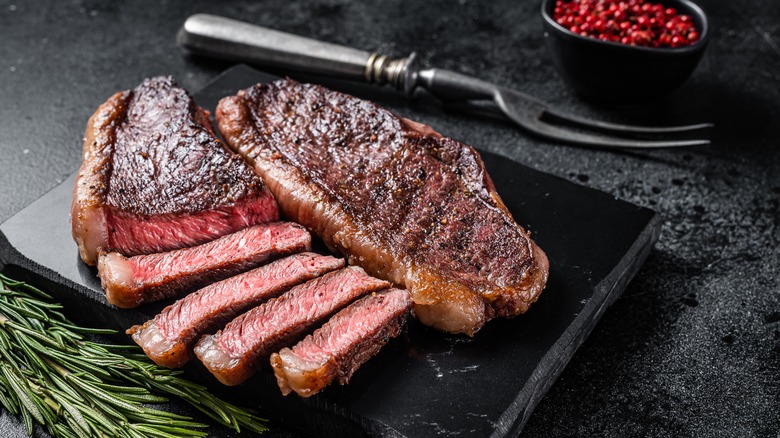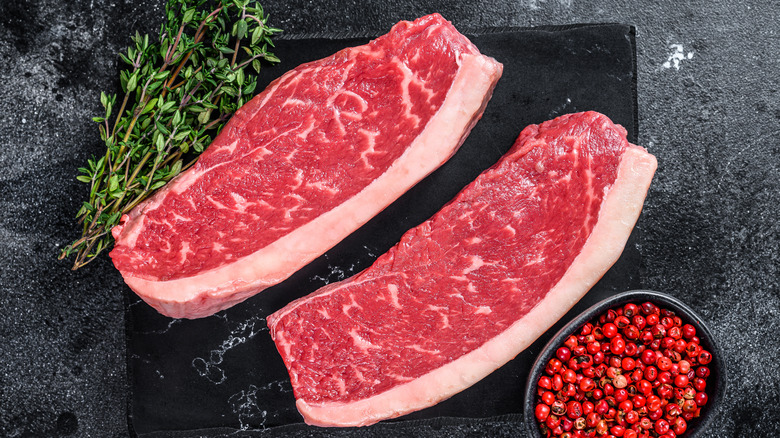What's The Difference Between Choice And Select Steaks?
We may receive a commission on purchases made from links.
You're going to the store to buy steak for a special celebration or just a casual dinner. You walk up to the meat department, see all the interesting choices, but then... what do you choose? Well, if you're buying a steak from a grocery store, you're met with three options: prime grade, which is the top grade possible, choice grade, which follows prime, and select grade, which is the third highest grade. Prime-grade steak is so highly graded that only the top 2.9% of beef makes the cut, per Schweid and Sons.
There are a few other grades that aren't as common. Commercial grade and standard grade are most often seen as store-branded beef or ungraded, according to the United States Department of Agriculture (USDA). Cutter grade, canner grade, and utility beef grades usually end up as processed meats or can be used for making ground beef. Of the prime, choice, and select steak grades, we know that prime is the best. Prime-graded beef has lots of fat marbling throughout and is what's commonly served at restaurants. But what's the difference between choice and select steaks? Here's what you need to know.
Don't mi-steak these two grades of steak
As mentioned above, choice grade is the second highest grade of beef in the United States and is the most commonly consumed grade in grocery stores, making up about 53% of all the beef that's consumed in the United States, per Schweid and Sons. There is a bit less marbling found in choice grade than in prime grade, and that translates to a tad bit less juiciness. When it comes time to cook, it's recommended to either braise, roast, or simmer that choice-grade steak with some liquid to further tenderize it and achieve the best results, according to USDA. Additionally, choice loin and rib steaks are great for grilling, roasting, and broiling.
Select grade is the third-highest grade but is generally the lowest grade that you'll find in grocery stores (via Schweid and Sons). There is less marbling on this select-grade beef than choice-grade beef, so that means there's less fat content. This beef is so lean that it is only about 2 to 4% fat, according to MasterClass. Less fat content translates then to less juiciness and more firm beef, so because of less fat, it's great for those focused on a healthier diet. Even with this grade being this lean, it is still possible to make a delicious meal with the right techniques. Due to select-grade beef not being as tender, it's best to braise it or marinate and grill it to add more flavor and tenderness.

